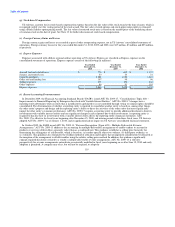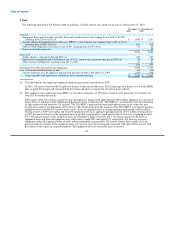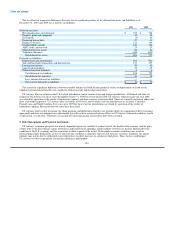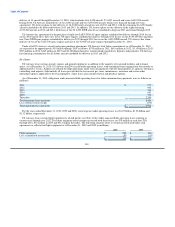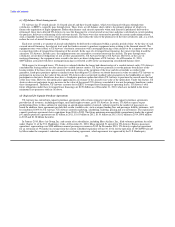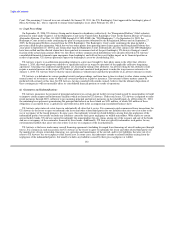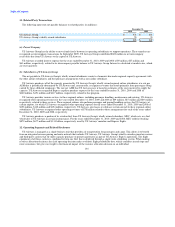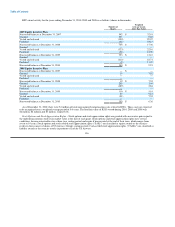US Airways 2010 Annual Report Download - page 127
Download and view the complete annual report
Please find page 127 of the 2010 US Airways annual report below. You can navigate through the pages in the report by either clicking on the pages listed below, or by using the keyword search tool below to find specific information within the annual report.
Table of Contents
US Airways continues to monitor the market for auction rate securities and consider its impact (if any) on the fair value of its
remaining investments in these securities. If the current market conditions deteriorate, US Airways may be required to record additional
impairment charges in other nonoperating expense, net in future periods.
Accounts Receivable
Most of US Airways' receivables relate to tickets sold to individual passengers through the use of major credit cards or to tickets sold
by other airlines and used by passengers on US Airways or its regional airline affiliates. These receivables are short-term, mostly being
settled within seven days after sale. Bad debt losses, which have been minimal in the past, have been considered in establishing
allowances for doubtful accounts. US Airways does not believe it is subject to any significant concentration of credit risk.
(c) Interest Rate Risk
US Airways has exposure to market risk associated with changes in interest rates related primarily to its variable rate debt obligations.
Interest rates on $1.62 billion principal amount of long-term debt as of December 31, 2010 are subject to adjustment to reflect changes in
floating interest rates. The weighted average effective interest rate on US Airways' variable rate debt was 4.28% at December 31, 2010.
The fair value of US Airways' long-term debt was approximately $2.85 billion and $2.83 billion at December 31, 2010 and 2009,
respectively. The fair values were estimated using quoted market prices where available. For long-term debt not actively traded, fair
values were estimated using a discounted cash flow analysis, based on US Airways' current incremental borrowing rates for similar types
of borrowing arrangements.
6. Fair Value Measurements
The accounting guidance for fair value measurements, included in FASB ASC Topic 320, Investments – Debt and Equity Securities,
defines fair value, establishes a consistent framework for measuring fair value and expands disclosure for each major asset and liability
category measured at fair value on either a recurring or nonrecurring basis. This accounting guidance clarifies that fair value is an exit
price, representing the amount that would be received to sell an asset or paid to transfer a liability in an orderly transaction between
market participants. As such, fair value is a market-based measurement that should be determined based on assumptions that market
participants would use in pricing an asset or liability. As a basis for considering such assumptions, this accounting guidance establishes a
three-tier fair value hierarchy, which prioritizes the inputs used in measuring fair value as follows:
Level 1. Observable inputs such as quoted prices in active markets;
Level 2. Inputs, other than the quoted prices in active markets, that are observable either directly or indirectly; and
Level 3. Unobservable inputs in which there is little or no market data, which require the reporting entity to develop its own
assumptions.
Assets measured at fair value on a recurring basis are as follows (in millions):
Quoted Prices in Significant Other Significant
Active Markets for Observable Unobservable
Identical Assets Inputs Inputs Valuation
Fair Value (Level 1) (Level 2) (Level 3) Technique
At December 31, 2010
Investments in marketable securities (noncurrent) $ 57 $ — $ — $ 57 (1)
At December 31, 2009
Investments in marketable securities (noncurrent) $ 203 $ — $ — $ 203 (1)
(1) US Airways estimated the fair value of its auction rate securities based on the following: (i) the underlying structure of each security;
(ii) the present value of future principal and interest payments discounted at rates considered to reflect current market conditions;
(iii) consideration of the probabilities of default, passing a future auction, or repurchase at par for each period; and (iv) estimates of
the recovery rates in the event of
126





